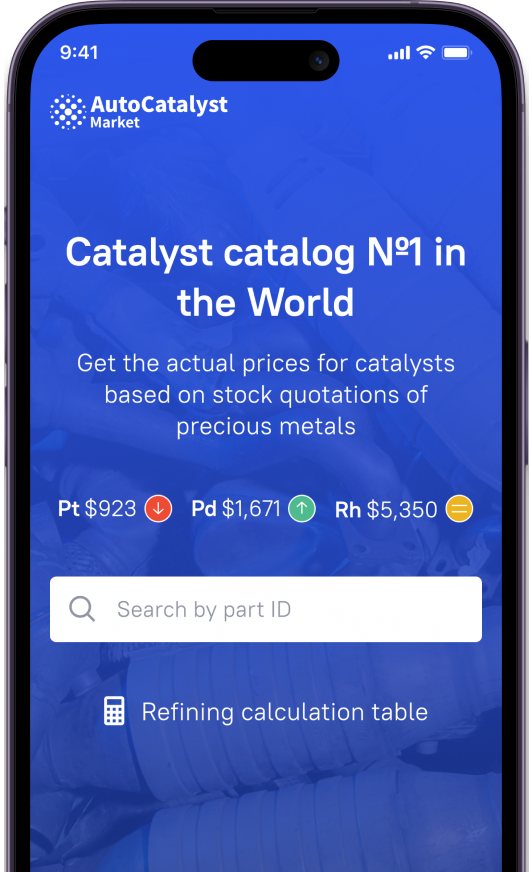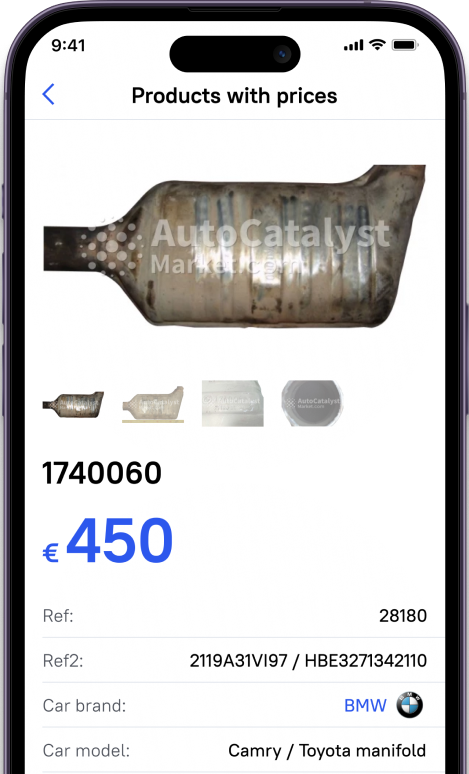- How to find the article?
- Why do you need an article?
- What is cross-reference?
- What to do with a used catalyst without the article?
- Searching by manufacturer
The use of articles, or part numbers, in the automotive industry has a long and significant history. These unique identifiers play a crucial role for both automakers and parts companies, facilitating smooth operations and efficient communication within the industry.
Part numbers were introduced to streamline the production and distribution of auto parts. They provide a standardized way to identify and catalog each component, ensuring accuracy and reducing the margin of error. For automakers, part numbers enable precise assembly during the manufacturing process, allowing for the seamless integration of various parts into the final vehicle. This precision is vital for ensuring quality and safety.
On the other hand, parts companies, including manufacturers and suppliers, rely on part numbers to manage their inventories and fulfill orders. These unique identifiers help in tracking, storing, and delivering auto components efficiently. They enable precise communication between the different players in the automotive supply chain, from manufacturers to distributors to repair shops.
In essence, part numbers serve as a universal language in the automotive industry, bridging the gap between automakers and parts companies. They simplify operations, improve inventory management, and enhance the overall efficiency of the automotive supply chain. This history and continued use of part numbers demonstrate their indispensable role in the industry.
How to find the article?
Part numbers vary in their placement, depending on the type of part and its manufacturer. They can typically be located on the part itself, on the product's packaging, and associated elements, such as protective films. Additionally, these numbers may be documented in accompanying materials.
However, it's important to note that some parts lack part numbers. This may be due to the specific nature of the component, making it challenging to inscribe information on it, such as in the case of a silent block. Alternatively, some manufacturers may opt not to provide part numbers for certain components. In these instances, the article number is exclusively available on the packaging.
When procuring a spare part from an authorized seller, the article number will also be listed on the invoice. These documents serve as valuable sources of information, helping you accurately identify and track the specific spare part you've acquired.
Why do you need an article?
The need for a part number primarily arises when you seek to acquire a precise replacement part, especially when no other substitute will suffice. However, the situation may differ when you're exploring alternative options. This is because each manufacturer employs its unique identification system, making it a challenging task to select a replacement part by solely having the part number from a different manufacturer. In such cases, if the part is not an original component, it often relies on cross-referencing with the original part number to establish compatibility. This cross-reference mechanism becomes a valuable tool in identifying suitable alternative parts and ensures that the replacement part aligns with the intended function, even when the manufacturer's identification systems vary.
What is cross-reference?
The concept of cross-reference originates from the term "cross number," which essentially represents a part number used as a reference point. In most cases, this part number corresponds to the original number assigned by the car manufacturer. This practice makes perfect sense because the car manufacturer possesses in-depth knowledge of the vehicle's specifications and requirements, allowing them to assign the appropriate part numbers. When independent parts manufacturers produce their components, they often adhere to a principle such as, "My part bears the number 12345 and is equivalent to the original Mercedes part 54321." Similarly, when another manufacturer designates their product as an analog to the same original part, a cross-reference can be established using the common denominator, the original part number 54321. This process enables multiple independent manufacturers to create identical parts that effectively replace the original manufacturer's components. For instance, when looking for your catalyst reference number you can visit the AutoCatalystMarket website and type your car brand or catalyst serial number in the search bar, and the information on your catalyst manufacturer plus cross-reference will be found.
What to do with a used catalyst without the article?
To ascertain the compatible catalytic converter for your vehicle, all you require is the Vehicle Identification Number (VIN). This becomes particularly crucial when a car manufacturer has been producing a specific model line over an extended period and has introduced design alterations. Consequently, cars of the same brand may accommodate catalytic converters of varying sizes and form factors. For example, if you own a 2006 Volkswagen Golf 5 with a 1.4 L engine, pinpointing the exact converter can be a challenging task. However, the VIN serves as a distinctive identifier for your vehicle, eliminating any potential errors when identifying the required parts.
Searching by manufacturer
The process becomes even more straightforward when you have a specific manufacturer's parts in mind. In many instances, official car brands do not produce their OEM catalysts and instead source them from third-party manufacturers. The AutoCatalystMarket website offers a manufacturer's catalog, simplifying the search for the appropriate converter. Furthermore, you can browse through images for visual confirmation. Once you've located the right component, our website provides a platform to connect with potential buyers interested in purchasing your used catalytic converter for recycling.



































